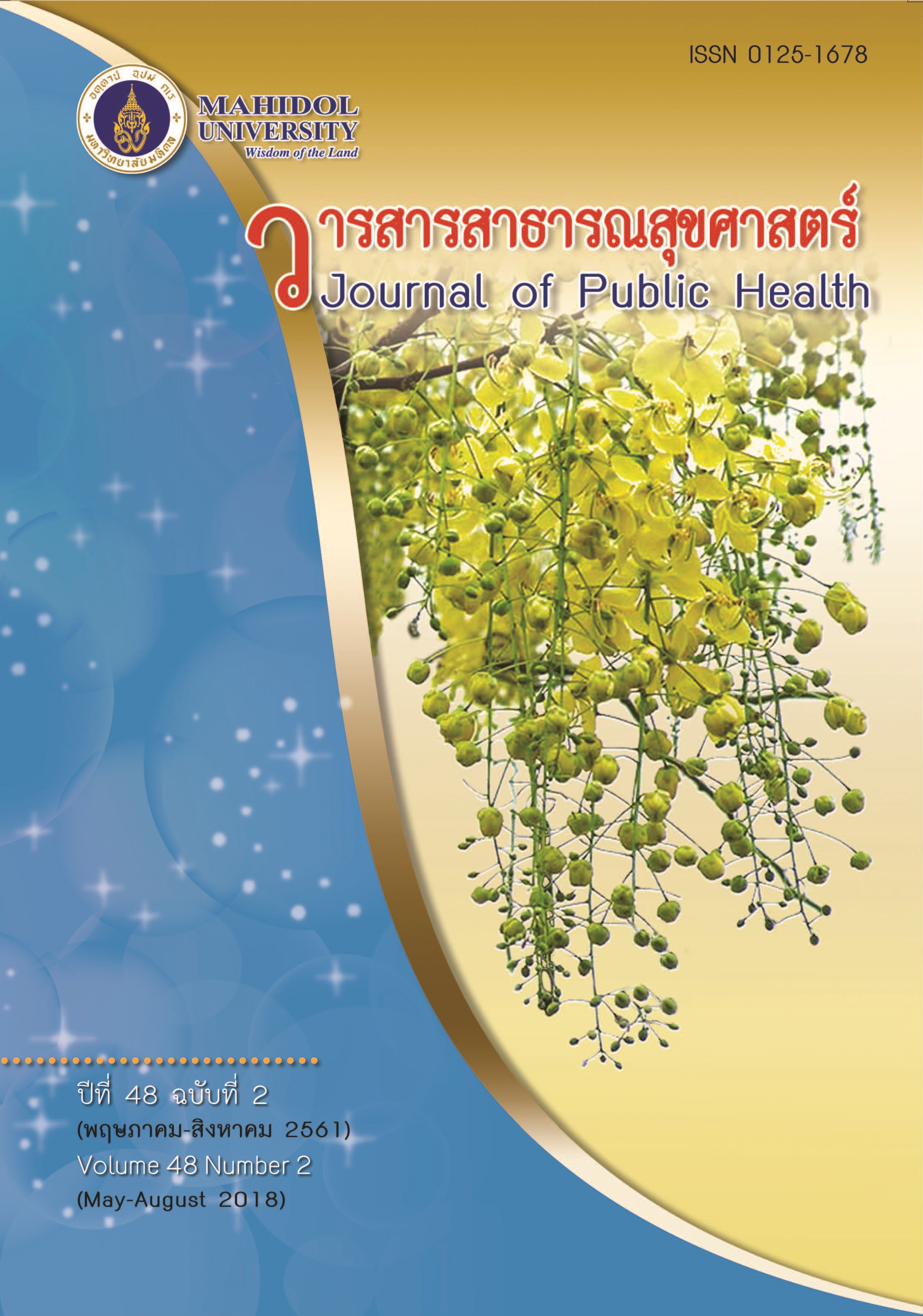Bystander Cardio-Pulmonary Resuscitation Practice among Out- of- Hospital Cardiac Arrest: Rajavithi Hospital’s Narenthorn Emergency Medical Service Center, Thailand
Keywords:
bystander cardiopulmonary resuscitation, out-of-hospital cardiac arrest, Rajavithi Hospital’s Narenthorn Emergency Medical Service CenterAbstract
This study aimed to examine outcomes of bystander Cardio-Pulmonary Resuscitation (CPR) among Out-of-hospital cardiac arrest (OHCA) patients at Rajavithi Hospital’s Narenthorn Emergency Medical Service (EMS) Center, Thailand. A retrospective study using secondary data of 510 OHCA patients from 2014 to 2016 was conducted. Descriptive statistics, inferential statistics, univariate (Chi-square), and multivariate analyses (Logistic regression) were employed for data analysis. The majority of bystander CPR performers were volunteers (87.3%) and 43.7 % generate return of spontaneous circulation (ROSC). Calling time duration and initial electrocardiogram (EKG) had significant relationship with OHCA patients’ survival to those receiving bystander CPR. Therefore, calling time and initial EKG were major factors of OHCA patients’ survival. Encouraging CPR training and providing automated external defibrillator devices (AED) in many public areas is important for effective bystander CPR.
Downloads
Published
Issue
Section
License
Creative Commons License CC-BY-ND

